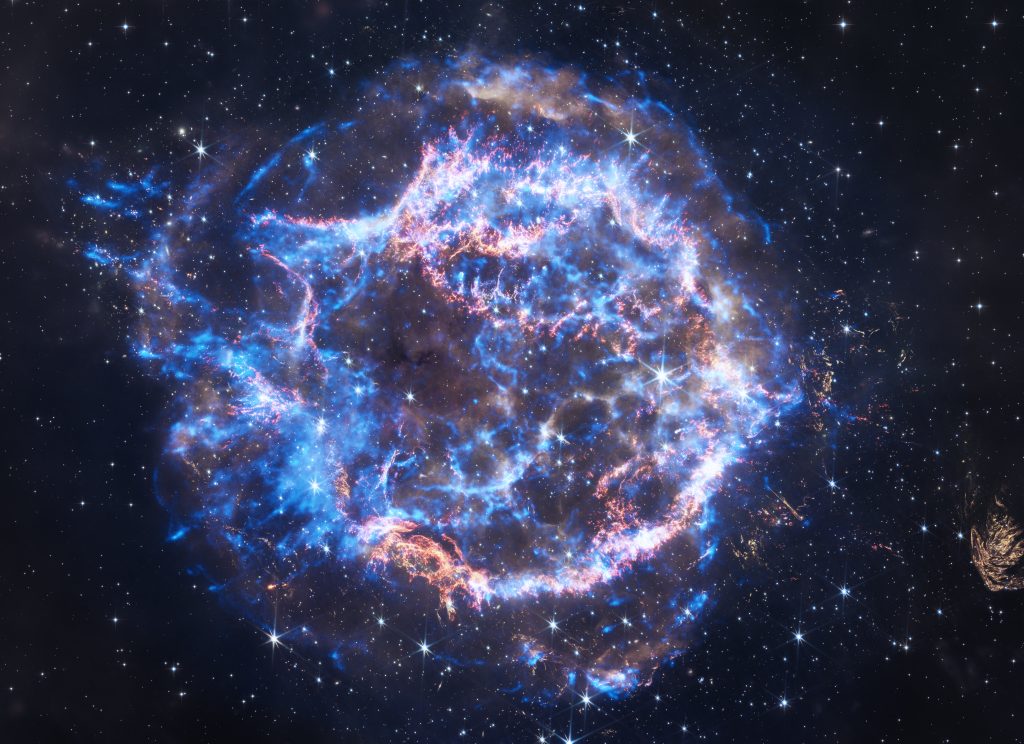NASA’s Chandra X-ray Observatory celebrates 25 years since its launch 25 Scenes You’ve Never Seen Before About various objects in space.
These images all contain data from Chandra, and demonstrate how X-ray astronomy is probing every corner of the universe. By combining X-rays from Chandra with other space observatories and ground-based telescopes, as is done in many of these images, astronomers can address some of our biggest questions and investigate long-standing mysteries across the universe.
On July 23, 1999, the Space Shuttle Columbia launched into orbit carrying Chandra, the heaviest payload the shuttle had carried at the time. Under the command of Commander Eileen Collins, astronauts aboard Columbia placed Chandra into a highly elliptical orbit that would take it nearly one-third the distance to the Moon.
“For a quarter century, Chandra has produced one amazing discovery after another,” said Pat Slane, director of the Chandra X-ray Center at the Smithsonian Astrophysical Observatory in Cambridge, Massachusetts. “Astronomers have used Chandra to explore exoplanets, dark energy, and other mysteries that were unknown when the telescope was built.”
X-rays are a particularly penetrating type of light that reveals extremely hot objects and highly energetic physical processes. Many fascinating regions of the universe glow intensely in X-rays, such as the debris of an exploded star or the material swirling around a black hole. Stars, galaxies, and even planets emit X-rays that can be studied with Chandra.
“Chandra is a great success story for humanity and its pursuit of knowledge,” said Andrew Schnell, acting project manager for the Chandra X-ray Observatory at NASA’s Marshall Space Flight Center in Huntsville, Alabama. “Chandra’s incredible achievements are made possible by the hard work and dedication of our team.”
The new series of images is a sample of the roughly 25,000 observations Chandra has taken during its quarter-century in space.
Riccardo Giacconi and Harvey Tananbaum first proposed the mission that would become Chandra to NASA in 1976. Chandra was eventually selected as one of NASA’s “Great Observatories,” alongside the Hubble Space Telescope, the now-retired Compton Gamma-Ray Observatory, and the Spitzer Space Telescope, each observing a different kind of light.
In 2002, Giacconi was awarded the Nobel Prize in Physics “for his pioneering contributions to astrophysics leading to the discovery of cosmic X-ray sources,” which laid the foundation for the development and launch of Chandra.
Today, astronomers continue to use Chandra data in conjunction with other powerful telescopes, including NASA’s James Webb Space Telescope and the Imaging X-ray Polarimetry Explorer (IXPE). For example, last year the Chandra collaboration with Webb found evidence of two of the most distant black holes ever observed ( here and here), in collaboration with IXPE Revealed While studying an X-ray nebula created by a pulsar, they discovered the “bones” of a ghostly cosmic hand.
Chandra’s scientific research has produced more than 700 doctoral degrees and supported a diverse talent pool of more than 3,500 undergraduate and graduate students, nearly 1,700 postdoctoral researchers, and more than 5,000 principal investigators in the U.S. and around the world. Demand for the telescope has remained extremely high throughout the mission, with only about 20% of requested observing time being approved.
Scientists have written more than 10,000 peer-reviewed and accepted papers based on Chandra data and garnered nearly 500,000 citations, making Chandra one of NASA’s most productive missions in astrophysics.
“On behalf of the STS-93 crew, we are incredibly proud of the Chandra X-ray Observatory and the incredible team that built and launched this astronomical gem,” said Eileen Collins, commander of Space Shuttle Columbia, which launched Chandra into space in 1999. “Chandra’s discoveries have continued to amaze and thrill us for the past 25 years.”
NASA’s Marshall Space Flight Center manages the Chandra mission. The Smithsonian Astrophysical Observatory’s Chandra X-ray Center manages science from Cambridge, Massachusetts, and flight operations from Burlington, Massachusetts. Northrop Grumman, Redondo Beach, California, was the prime contractor for the spacecraft.
Megan Watzke
Chandra X-Ray Center, Cambridge, Massachusetts
617-496-7998
email address
Jonathan Deal
Marshall Space Flight Center, Huntsville, Alabama
256-544-0034
[email protected]
This image is a collection of 25 new space images celebrating the 25th anniversary of the Chandra X-ray Observatory. The images are arranged in a grid, with 5 images in 5 columns. From the top left across the rows, the following objects are visible in the images: Crab Nebula, Orion Nebula, Eye Galaxy, Cat’s Paw Nebula, Milky Way Center, M16, Shadow of the Bat, NGC 7469, Virgo Cluster, WR 124, G21.5-0.9, Centaurus A, Cassiopeia A, NGC 3532, NGC 6872, Hb 5, Abell 2125, NGC 3324, NGC 1365, MSH 15-52, Arp 220, Jupiter, NGC 1850, MACS J0035, and SN 1987A.


